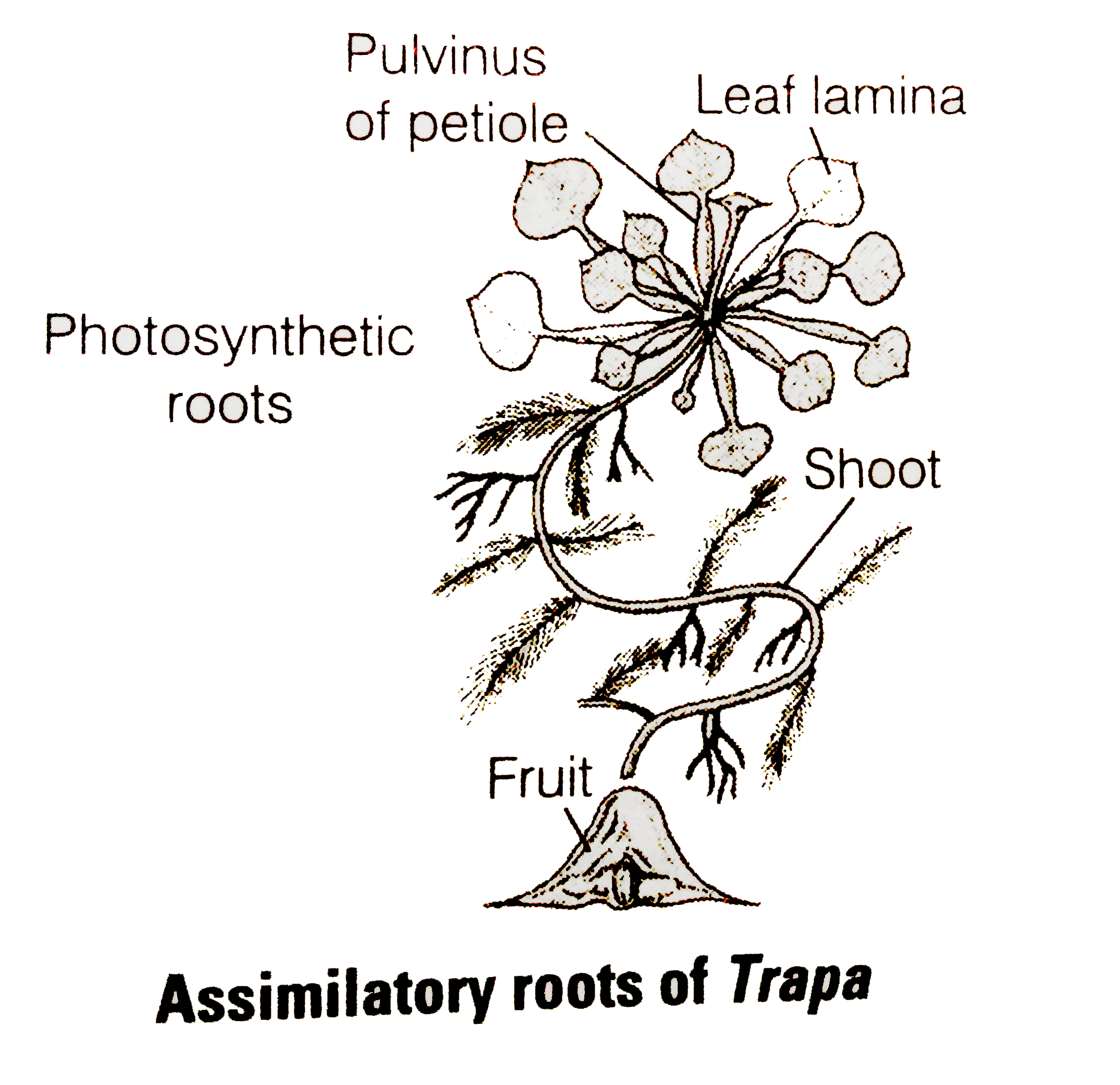In Opuntia, the stem is modified into a flattened green structure of perform the function of leaves, (i.e., photosynthesis). Cite some other example of modifications of plant parts for the purpose of photosynthesis.
Opunita is a xerophytic plant, in which leaves are modified into spine to reduce the rate of transpiration and they donot perform the photosynthesis at all.
So function of photosynthesis in Opuntia plant is performed by stem which is thick fleshy and flattened structure containing chlorophyll and stores food. It is known as phylloclade.
Sometimes , the stem, i.e., about one internode long modifies into a leaf like structure to carry out photosynthesis , as in Asparagus. They are present in axil of scale leaves while true leaves aer reduced to scales or spines.
Similarly in some plants, roots become assimilatory as in the case of Trapa and Tinospora. These roots grow outside the soil, develop chlorophyll in them and perform photosynthesis.

Topper's Solved these Questions
- MORPHOLOGY OF FLOWERING PLANTSBOOK - NCERT EXEMPLARCHAPTER - MORPHOLOGY OF FLOWERING PLANTSEXERCISE - Short Answer Type Questions
14 Videos
- MORPHOLOGY OF FLOWERING PLANTSBOOK - NCERT EXEMPLARCHAPTER - MORPHOLOGY OF FLOWERING PLANTSEXERCISE - Long Answer Type Questions
8 Videos
- MORPHOLOGY OF FLOWERING PLANTSBOOK - NCERT EXEMPLARCHAPTER - MORPHOLOGY OF FLOWERING PLANTSEXERCISE - Long Answer Type Questions
8 Videos
- MINERAL NUTRITIONBOOK - NCERT EXEMPLARCHAPTER - MINERAL NUTRITIONEXERCISE - Long Answer Type Questions
8 Videos
- NEURAL CONTROL AND CO-ORDINATIONBOOK - NCERT EXEMPLARCHAPTER - NEURAL CONTROL AND CO-ORDINATIONEXERCISE - LONG ANSWER TYPE QUESTIONS
3 Videos
Similar Questions
Knowledge Check
Stems modified into flat green organs performing the functions of leaves are known as
APhyllodesBPhyllocladesCScalesDCladodesStems modlfted into flat green organs performing the functions of leaves are known as
AScalesBCladoodesCPhyllodesDPhyllociadesStems modlfted into flat green organs performing the functions of leaves are known as
ACladodesBPhyllodesCPhyllocladesDScales
Read the passage and answer the questions that follow:
Simple tissues are also known as ground tissues. They include the tissues known as parenchyma, collenchyma, and sclerenchyma. The parenchyma tissue is composed of parenchyma cells, which are found throughout the plant. They are particularly abundant in the stems and roots. The leaf cells that carry out photosynthesis are also parenchyma cells. Unlike many other plant cells, parenchyma cells are alive at maturity and retain the ability to divide. They perform many functions. Some are special ised for photosynthesis, some for storage, and oth ers for secretion and transport.
Like parenchyma cells, collenchyma cells are alive at maturity. They differ from parenchyma cells in that they have thick cell walls. The col lenchyma tissue is most often found in the form of strands or cylinders of cells in stems and leaves. The thick cell walls of collenchyma cells provide support to these plant structures. The strands of tissues in celery are collenchyma tissues. Even collenchyma cells retain the ability to divide. Sclerenchyma consists of thick-walled dead cells. It possesses extremely thick secondary walls due to uniform deposition of lignin. It provides mechanical strength. The cells may occur singly or in groups and may be long and fibrous or stony.Stone cells (sclereids) are found in seed coats and some fruits (e.g, pear).
Which type of tissue is responsible for the hardness of the coconut shell?
View SolutionStems are modified into flattened structures, which carryout photosynthesis in
View Solution_______are the green stems of limited growth which have taken over the function of photosynthesis from leaves.
View Solution_______ transports product of photosynthesis from the leaves where they are synthesised, to other parts of the plant.
View SolutionFor photosynthesis ( i.e . For the synthesis of organic matter,) the green plants need only
View Solution
